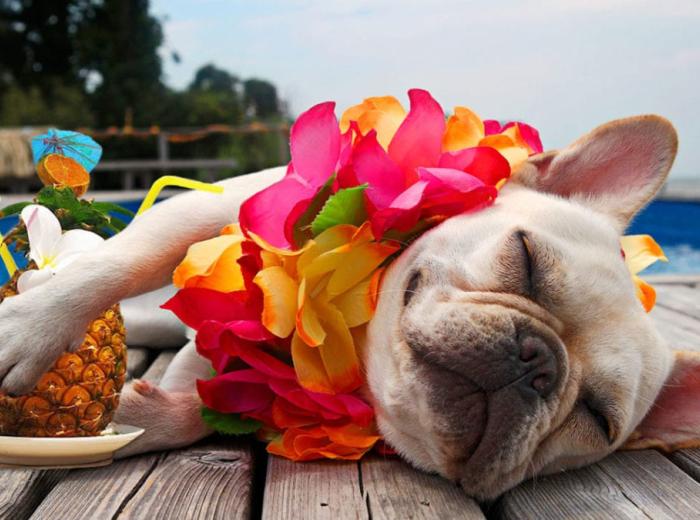
Written by Dr. Angela Durkac
Hello! This month is about giving owners an information guide to having a great summer with your pet! With the long, sunny days of summer coming it is important to remember the effects the rising temperatures can have on our furry companions. Even the healthiest of pets can suffer from overheating, dehydration and other complications from the rising temperatures. Heatstroke is one of the most common emergencies we see at AAH in the summer, and in most cases it’s highly preventable. Unlike humans who lose heat through their skin, dogs can only get rid of heat through their mouths and respiratory systems. That is why we, at Alpine Animal Hospital, want to offer you information to keep your summer months fun.
When they are overheating, you will see signs such as excessive painting, weakness, and bright red membranes of mouth/tongue which if untreated can lead to collapse, vomiting and diarrhea. Signs of heat related injury can develop quickly when they stay inside a parked car or other vehicle. Many people do not realize just how quickly the interior of a car can increase to deadly levels, even if the windows are cracked or the car is in the shade. It can also occur in dogs that exercise too rigorously during periods of high heat, especially if humidity is also elevated.
I’ve put together some tips for keeping your pet safe and cool, as well as a bit of heatstroke first aid should your pooch find himself overheated this summer.
Keep ’em Cool Pointers:
- Shade and Water – Maker sure that any animal outside has access to shade and fresh water! Please remember that pets will drink more water during the heat and so need water available at all times.
- Exercise your pet in the coolest part of the day. Dawn and dusk, or after dark, is safest. If it’s hotter than 85F outside, use extreme caution and keep it short.
- Soak your pet down before exercising. A quick stop at the hose before heading out will help your pet lose more heat through evaporation. Additionally, if there are lakes or creeks nearby, re-wetting your pet during exercise and play helps prevent overheating.
- Limit exercise – If your pet is a tennis ball fiend, you might want to avoid playing fetch in the heat. Dogs with high-drive personalities may not know their own limits. It is up to you to stop throwing the ball and make the dog take a break and drink water.
- Do not leave pets outside unattended. Check them often to make sure they are ok, have not turned over their water, etc.
- Remember, short-nosed brachycephalic dogs like bulldogs and pugs are extremely susceptible to heat stroke, and can get overwhelmed just sitting in the shade. With these breeds, you need to take extra precautions.
- DO NOT leave your pet in the car, even for “just a second” even with the A/C on. Pets’ temperature will elevate to overheating within a few minutes in a car.
What If My Dog Starts Showing Signs of Heat Stroke?
- Get to a veterinarian immediately. This is the single most important thing you can do. Do not delay driving to the vet – this is not a wait-and-see condition.
- Soak your pet down with cool (not icy) water.
- Provide cool (not icy) water to drink.
- Place your pet near the AC vents in the car while driving to the vet.
- And once again, get to a veterinarian immediately. If your vet is across town, go to the nearest hospital that is open. Ten minutes can make all the difference.
Keep your critters cool – have a happy and safe summer, y’all!
Best,
Dr. Angela Durkac
